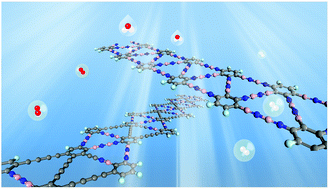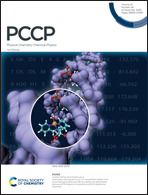The band structure engineering of fluorine-passivated graphdiyne nanoribbons via doping with BN pairs for overall photocatalytic water splitting†
Abstract
In this work, we systematically study the electronic band structures of fluorine-passivated graphdiyne nanoribbons (F_GDYNRs) doped with BN pairs using first-principles density functional theory calculations. The calculation results show that that fluorine passivation and heteroatom doping play different roles in modifying the electronic structures of F_GDYNRs. The former helps lower the position of the valence band of the graphdiyne nanoribbons (GDYNRs) while the latter significantly opens the band gap of GDYNRs. The doped F_GDYNRs have direct band gaps of 1.8–2.9 eV, and their valence and conduction bands perfectly straddle both the oxidation and reduction potential of water. This work demonstrates that F_GDYNRs, via doping with BN pairs, possess high catalytic activity for water splitting, which will shed light on the design of metal-free low-dimensional photocatalysts.



 Please wait while we load your content...
Please wait while we load your content...